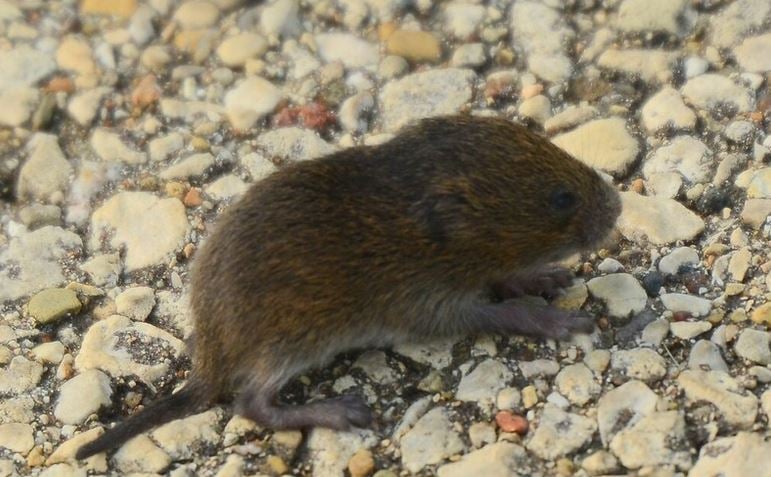Shield Your Lawn: Efficient Vole Control Techniques
Wiki Article
Understanding Vole Pest Control: In-depth Insights on Invasion Prevention and Therapy Methods
By recognizing the subtle signs of vole infestation early on, we can take positive steps to avoid prevalent damage. In this conversation, we will explore the subtleties of vole actions, dive into the recognition of problem indicators, and uncover the most effective prevention and therapy techniques.Understanding Vole Actions
Taking a look at the foraging patterns of voles supplies useful insights into their actions and habitat choices. Voles, small rodents resembling mice, are herbivores recognized for their underground tunneling tasks. By observing their foraging habits, researchers can get a better understanding of where voles like to establish their environments and the degree of their environmental impact. Voles are prolific breeders, with a single women capable of generating a number of trashes in a year, making it crucial to understand their habits for efficient insect control techniques.Study indicates that voles exhibit careful feeding practices, preferring roots, roots, and seeds. This dietary preference influences their foraging patterns, leading them to areas abundant in plants and ground cover. Furthermore, voles are known to create elaborate passage systems for foraging and nesting purposes, showing a high level of versatility to their environments.
Recognizing vole habits is essential for applying targeted insect control steps that interrupt their environment preferences and foraging activities (vole lawn damage). By studying their habits, experts can establish a lot more efficient avoidance and treatment strategies to handle vole infestations

Identifying Indicators of Vole Problem
Vole invasions can be found by acknowledging particular indicators of their visibility in an area. Among one of the most usual indications of a vole invasion is the visibility of surface area runways. Voles create networks of narrow paths on the ground that are usually about 2 inches broad. These paths are often found in verdant locations or underneath mulch or ground cover where voles can relocate openly and look for food.Another essential indicator of vole infestation is the presence of small burrow openings in the ground. Additionally, voles are known to leave behind eaten plant stems, roots, and light bulbs near their burrow openings, suggesting their feeding task in the area.
Additionally, vole droppings can likewise represent their presence. Vole droppings are small, brownish, and cylindrical fit, appearing like grains of rice. Discovering these droppings along runways or near burrow openings can verify a vole problem. By being cautious for these indications, property proprietors can promptly deal with vole infestations and avoid additional damage.
Carrying Out Proactive Prevention Actions

Moreover, employing all-natural vole deterrents like castor oil-based repellents or killer pee can act as reliable preventive actions. It is likewise suggested to consistently inspect exterior rooms for any kind of indicators of vole task, such as runways or burrow openings, to address prospective problems without delay. vole pest control. By embracing these positive avoidance methods, homeowner can considerably reduce the possibility of vole damages and preserve the health and wellness and aesthetic appeals of their landscapes
Effective Treatment Techniques
Incorporating targeted trapping techniques and using approved rodenticides are vital elements of effective treatment methods for handling vole invasions. Normal surveillance and maintenance are also key aspects of successful therapy techniques to make sure that vole populaces are kept under control. By integrating trapping, rodenticides, environment modification, and constant monitoring, effective vole pest control can be attained.Monitoring and Maintenance Tips
Regular monitoring permits for the very early detection of vole activity, enabling prompt intervention prior to invasions intensify. To efficiently monitor vole populaces, tactically placed catches can be used in vole runways or near burrow entries.Furthermore, keeping a neat and clean landscape is necessary in vole prevention. Cleaning away debris, such as stacks of wood or dense plants, eliminates potential vole environments. On a regular basis cutting and trimming grass plants aids minimize vole hiding spots and reduces their access to food resources.
In addition, continuous maintenance of physical obstacles, such as fencings or cable mesh, is vital to stop vole breach. Inspecting and repairing any damages to these structures ensures that vole control remains efficient in guarding homes from invasions. By integrating these monitoring and maintenance practices into a detailed vole insect control strategy, people can properly take care of vole populaces and safeguard vole control utah their properties from damage.
Final Thought
Finally, grasping vole bug control requires a strong understanding of vole habits, the capacity to determine signs of infestation, executing proactive avoidance procedures, efficient therapy methods, and constant tracking and upkeep. By taking a detailed strategy to vole control, individuals can successfully take care of and prevent problems, eventually protecting their residential or commercial property and bordering setting from damage triggered by these tiny rats.In this discussion, we will discover the nuances of vole actions, dive into the identification of invasion indicators, and reveal the most reliable prevention and treatment techniques.Including targeted trapping approaches and using approved rodenticides are essential elements of reliable treatment strategies for taking care of vole invasions. To efficiently monitor vole populations, tactically positioned catches can be made use of in vole paths or near burrow entrances. Checking and repairing any problems to these frameworks makes certain that vole control remains reliable in securing homes from infestations. By incorporating these surveillance and upkeep methods right into an extensive vole insect control plan, individuals can effectively handle vole populaces and shield their homes from damage.
Report this wiki page